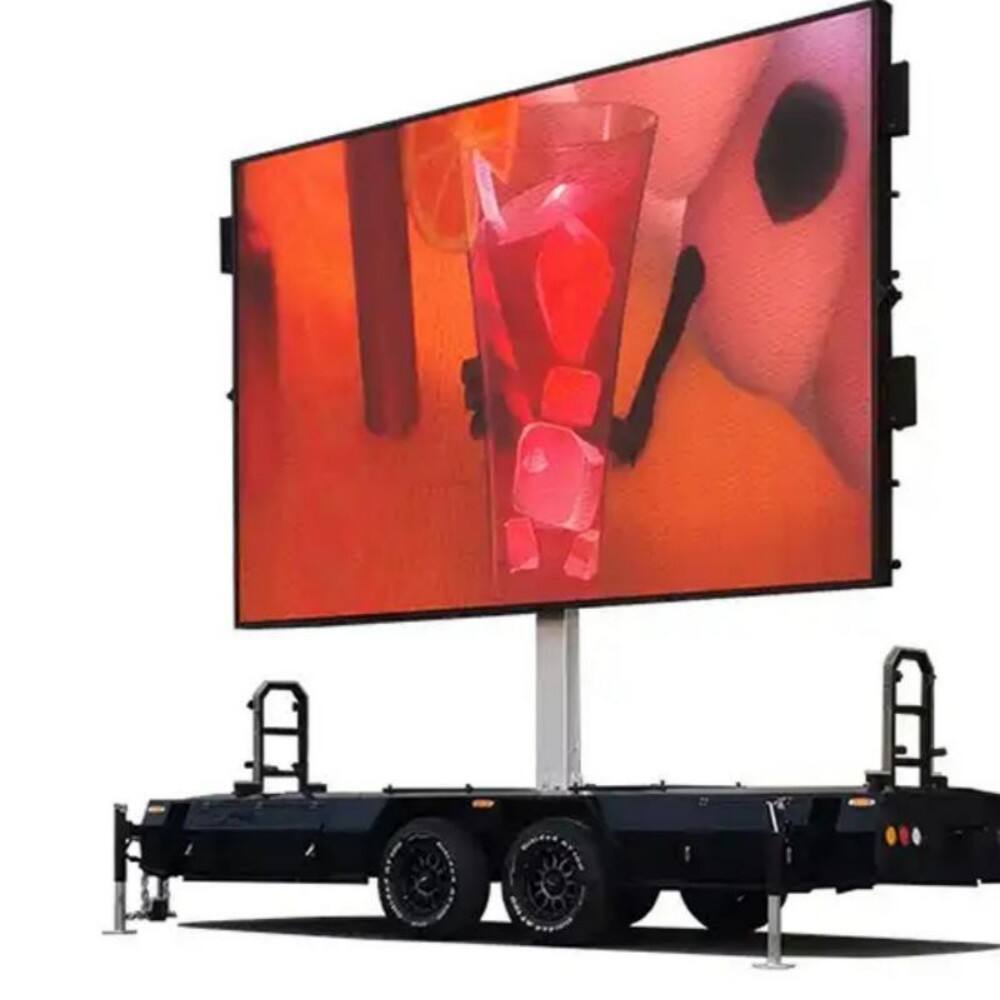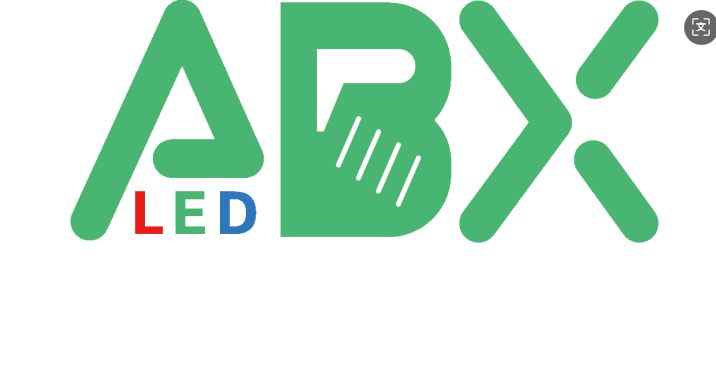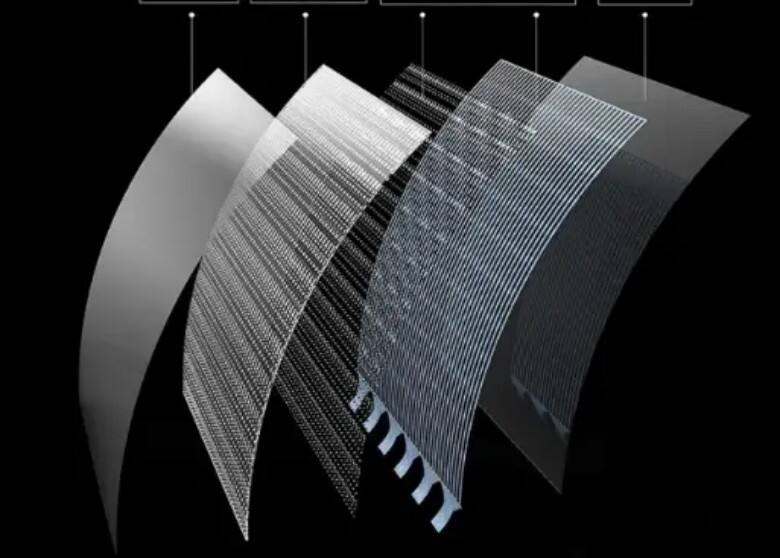Miksi LED-videopaneelit hallitsevat modernia visuaalista esitystä
Vertaansa vailla oleva kirkkaus ja selkeys ulkoisessa LED-mainonnassa
Ulkona käytettävät LED-näyttöpaneelit tarjoavat erittäin kirkkaan valon huolimatta suuresta lumenarvosta. Ne pysyvät näkyvissä myös kirkkaassa auringonvalossa, johon tavalliset mainosjulisteet eivät pysty vastata. Alkuperäiset tilastot tukevat tätä – monet tutkimukset osoittavat, että LED-näytöt ylittävät perinteiset mainosnäytöt selkeyden ja värien elävyyden osalta, riippumatta päivänajasta. Teknologian kehitys viime vuosina on nostanut toiminnan uudelle tasolle. Pikselitiheys on noussut huimasti ja resoluutio on jatkuvasti parantunut. Mitä tämä tarkoittaa? Kuvat ovat teräviä ja värit niin eläviä, että ne vaikuttavat lähes hyppäävän näytöltä. Yrityksille, jotka harkitsevat ulkoilmainantoon sijoittamista, nämä näytöt tekevät eron, olipa kyseessä yksinkertainen staattinen kyltti tai huomiota herättävä videoseinä, joka kiinnittää ohikulkevien autojen huomion. Erityisesti vilkkaille alueille sijoittuvat yritykset tarvitsevat tällaisia näyttöjä voidakseen erottua kilpailun joukosta.
Energiatehokkuus vertailussa perinteisiin digitaalisiin mainoskiloituuksiin
LED-näyttöpaneelit säästävät energiaa tehokkaammin kuin perinteiset LCD- ja hehkulamppuiset opasteet. Sähkölaskuissa säästyvä rahamäärä kasautuu nopeasti. Todellisten lukujen valossa LED-näytöt käyttävät yleensä huomattavasti vähemmän sähköä kuin vanhat vastaavat. Joidenkin tutkimusten mukaan käyttökustannuksia voidaan vähentää jopa 50 prosenttia tietyissä sovelluksissa. Näillä paneeleilla on myös pidempi käyttöikä ennen kuin ne täytyy vaihtaa, mikä tarkoittaa vähemmän huoltokäyntejä ja vähemmän järjestelmien pysäytysaikaa. Käytännön testit ovat osoittaneet, että LED-valojen kesto vaihtelee 50 000–100 000 tuntia verrattuna vain 20 000 tuntia vakiolamppuihin. Monet hallitukset tarjoavat tällä hetkellä verotuki- tai muita etuja yrityksille, jotka siirtyvät vihreämpien vaihtoehtojen, kuten LED-teknologian, käyttöön. Hiilipäästöjen koskevien säädösten kiristyessä yhä useammat yritykset huomaa, että LED-tekniikan käyttöönotto on kannattavaa sekä taloudellisesti että ympäristön kannalta. Yritykset, jotka tekevät siirtymän nykyään, käyttävät vähemmän varojen sähkönkulutukseen, tukevat ympäristöä ja saavat parannettua näyttöjärjestelmien suorituskykyä tulevaisuudessa.
Muuttavat sovellukset LED-videopareijoille
Ulkona oleva digitaalinen mainonta liiketoiminnan vuorovaikutuksessa
Yritykset muuttavat peliä asiakkaiden kanssa yhteydenotossa ulkoisilla digitaalisilla näyttöillä. Näillä näytöillä näytetään liikkuvaa sisältöä, joka kiinnittää ihmisten huomion ja pitää heitä katsomassa pidempään kuin staattiset mainokset koskaan voisivat. Yhä useammat yritykset valitsevat tämän tavan, koska haluavat toteuttaa silmiinpistäviä promootioita, jotka todella toimivat. Otetaan esimerkiksi McDonald's. Se alkoi käyttää suuria digitaalisia valikkonäyttöjä myymälöiden ulkopuolella, jotta voidaan muuttaa näytettävää sisältöä tarvittaessa. Tämä tarkoittaa, ettei tarvitse enää odottaa painettuja valikkoja tai vanhentunutta tietoa, vaan aina tuoreinta sisältöä asiakkaalle juuri oikeassa ajassa. Samanlainen teknologia mahdollistaa myös brändien, kuten Coca Colan, tehdä vuorovaikutteisista automaattejaan. Ihmiset voivat skannata koodin tai koskettaa näyttöä saadakseen erikoistarjouksia tai katsoa tuotteeseen liittyvää hauskaa sisältöä. Mitä nyt nähdään, on siirtymä kohti mainoksia, jotka tuntuvat vähemmän keskeytyksiltä ja enemmän kokemuksilta, joihin kannattaa tarttua. Kosketusnäytöt, QR-koodit ja muut vuorovaikutteiset ominaisuudet muuttavat mainostaulut jotain, joihin ihmiset todella haluavat vuorovaikuttaa eikä vain vilkaista ohikuljettaessa.
Vuokrausratkaisut LED-näytölle elokuvaesityksiin
Vuokraus LED-näytöt muuttavat live-tapahtumia tarjoamalla joustavia ja silmiänpistäviä visuaalisia ratkaisuja, jotka todella kiinnittävät ihmisten huomion. Yhä useammat tapahtumajärjestäjät valitsevat tämän vaihtoehdon, koska nämä näytöt sopeutuvat hyvin erilaisiin tiloihin ja toimivat paremmin useimmissa tilanteissa. Otetaan esimerkiksi Coachella, joka on jo vuosia käyttänyt valtavia LED-näyttöjä tuomaan väriä ja liikettä valtaviin festivaalilavoille. Vertailu vanhoihin järjestelmiin on kuin yöllä ja päivällä. Mikä tekee näistä näytöistä niin hyviä? No, niitä voidaan itse asiassa leikata tarpeen mukaan asennuspaikan mukaan, ja ne näyttävät silti loistavalta myös auringon valossa. Tässä on kyse myös modulaarisuudesta. Jokainen näyttöosio liittyy toisiinsa kuin palapelin palat, mikä tekee siirroista ja asennuksesta huomattavasti helpompaa yhdestä paikasta toiseen. Asennus kestää puolet siitä mitä aiemmin, mikä tarkoittaa, että työryhmät voivat keskittyä muihin tärkeisiin asioihin valmistellessaan esityksiä.
Vaikutusvoimainen mainonta urheilussa ja vähittäiskaupassa
Urheiluareenat ja ostokeskukset tukeutuvat nykyään voimakkaasti LED-videoseinämiin, joilla parannetaan katsojan iloa ja luodaan keskustelunaiheita ostoksille. Nämä valtavat näytöt tarjoavat kirkkaita kuvia, jotka kiinnittävät huomion ja pitävät ihmiset ajan tasalla tapahtumista. Otetaan esimerkiksi Madison Square Garden, johon on asennettu valtavia LED-paneelikokonaisuuksia, jotka näyttävät live-otteluiden tilastot ja heti ottelun jälkeen uudelleennäytön eri kulmista. Otteluihin osallistuvat katsojat saavat lisäiloa, kun he voivat seurata uudelleennäyttöä juuri areenalla. Tutkimukset osoittavat, että ihmiset, jotka seuraavat tapahtumia LED-näyttöjen kautta, vuorovaikuttavat sisällön kanssa jopa 60 prosenttia enemmän kuin ilman näitä näyttöjä, joten teknologiassa on selvästi jotain. Myös vähittäismyymälät ovat mukana kehityksessä. Esimerkiksi H&M:n liikkeet käyttävät LED-seinämiä esittämään mallikokoelmat ja äkkirabattimyynnin suoraan liiketiloihin. Vaikutus on melko vaikuttava, muuttaen tavalliset ostosmatkat pieneniksi muotinäytöksiksi, jotka houkuttelevät ihmisiä. Näiden näyttöjen ansiosta myös ajankohtaisuutisia ja aikarajoitteisia tarjouksia voidaan välittää välittömästi, mikä varmistaa ajankohtaisen viestinnän ja pitää asiakkaat palaamassa jälleen ja jälleen.
ABXLED -kuljetusnäyttö: Liikkuvan visuaalisen voiman keskus
Tehokkuudet: 5500 Nitin kirkkaus & IP65 suojelu
ABXLED-perävaunun LED-näyttö takkuu vakavan näkyvyyden ulkotiloissa, sillä sen kirkkaus saavuttaa 5500 nitin tason, jolloin se säilyy selkeästi näkyvänä myös aurinkoisina päivinä. IP65-luokituksen ansiosta tämä näyttö kestää luonnon kaikki haasteet – pöly ei pääse sisälle, eikä sade aiheuta ongelmia. Vertailussa muihin matkakelpoisiin LED-vaihtoehtoihin tämän erottaa korkean kirkkauksen ja vahvan säänsuojan yhdistelmä. Lopputulos? Näyttö, joka säilyttää kirkkaat kuvat kaikenlaisissa olosuhteissa. Näillä teknisillä ominaisuuksilla on erityisen suuri merkitys ulkokäytössä tapahtumissa, rakennustyömailla, joilla tarvitaan jatkuvia päivityksiä, tai muissa tilanteissa, joissa näyttöjen on oltava luotettavasti toimivia riippumatta päivän mittaan muuttuvista säähäiriöistä.

Modulaarinen suunnittelu nopean asennuksen tueksi
ABXLED-perävaunut ovat modulaarisella suunnitella varustettuja, mikä parantaa huomattavasti kuljetustehokkuutta ja nopeuttaa asennusta eri paikoissa. Koko järjestelmä on rakennettu niin, että näytöt saadaan nopeasti toimintaan ilman runsasta työvoimaa tai aikaa. Teknisiä tiimejä ilahduttaa näiden yksiköiden käyttö, sillä niiden kokoaminen ja purkaminen ei ole lainkaan vaikeaa. Monet kenttätyöntekijät mainitsevat, kuinka helppoa kaikki on, mikä säästää työvoimakustannuksia tapahtumien aikana. Mitä näitä perävaunuja erottaa, ovat muun muassa tärinäkestävät kehykset ja osat, jotka mukautuvat helposti erilaisiin tarpeisiin. Näillä päivityksillä rakenteesta varmistetaan vahvuus, vaikka sitä siirrettäisiin usein, mutta silti mahdollistetaan muutokset ympäristön mukaan. Ulkoilma-keikoista messuille ABXLED tarjoaa luotettavaa suorituskykyä kaikkialla, minne sitä viedään.
Taloudellinen ROI: Mainosten näkyvyyden parantaminen
ABXLED-perävaunun LED-näytöt tarjoavat erinomaisen kantavuuden ja erottuvat visuaalisesti, mikä parantaa mainonnan tuottoa yrityksille. Näiden näyttöjen siirrettävyys tarkoittaa, että ne voidaan sijoittaa juuri sinne, missä ihmiset kokoontuvat, jolloin niiden näkyvyys on suurempaa kuin staattisilla näytöillä. Viime kesänä musiikkifestivaaleilla näimme, että myymälät lähellä lavaa saivat 30 % enemmän asiakkaita sen jälkeen, kun ne asettivat näytön ovensisään. Useimmat markkinointiasiantuntijat varmistavat mielellään, että näytön sijoittaminen on yhtä tärkeää kuin itse näytöllä näytettävä sisältö. Hyvät sijainnit yhdessä vaihtuvien kuvien kanssa luo tilanteita, joissa brändit jäävät mieleen pitkäksi aikaa ihmisten ohitettua ne. Siksi monet yritykset sijoittavat näihin liikkuviin ratkaisuihin siitä huolimatta, että niiden alkuperäiset kustannukset ovat korkeat.
Tulevia innovaatioita LED-videopaneeli-tekniikassa
Läpinäkyviä LED-seinät rakennusratkaisujen integroimiseen
Läpinäkyvät LED-seinät ovat nykyisin ravistaneet arkkitehtuuria, yhdistäen tyylikkyyttä ja käytännöllisiä käyttöjä. Mikä tekee niistä erityisiä? Ne päästävät valon ja kuvat läpi, samalla kun ne paljastavat sen, mikä niiden takana sisällä tai ulkona. Olemme nyt huomanneet tämän teknologian leviävän laajalle – liikkeet haluavat kiinnittää huomiota ikkunoidensa avulla, toimistorakennusten eteiset hienostuvat ja museot rakastavat sitä, miten ne voivat muuttaa tyhjät seinät vuorovaikutteisiksi. Otetaan esimerkiksi New York City. Vain viime vuonna useita huomioita saaneita rakennuksia asensi näitä läpinäkyviä näyttöjä. Vaikutus? Ihmiset, jotka kävelevät ohi, huomaavat yhtäkkiä itsensä katsomasta muuttuvaa taidetta tai tuotenäyttelyitä, joiden vaikutelma on kuin leijuvan ilmassa. Jotkut kriitikot pitävät sitä kepeänä, mutta toiset väittävät, että juuri tätä kaupunkien tarvitsee pysyäkseen tuoreina ja kiinnostavina.
Tekoälyohjattu sisällön optimointi
Tekoälytekniikka muuttaa LED-näyttöjen käyttöä nykyään pääasiassa siksi, että se tekee sisällöstä paremmin vastaavaa kuin ihmiset todella haluavat nähdä. Järjestelmä tarkastelee aineistoa reaaliaikaisesti ja muuttaa näyttöjen sisältöä niin, että katsojat pysyvät kiinnostuneina pidempään. Tätä tukevat myös jotkin testit - mainokset, joita säädettiin sen mukaan, kuka niitä katsoi, mitä he pitivät mieluisina, ja jopa heidän ympärillään vallitsevat säätiedot, toimivat huomattavasti paremmin. Kun yritykset alkavat integroida reaaliaikaisia analytiikkatyökaluja LED-järjestelmiinsä, tulevaisuudessa on paljon potentiaalia. Nähdään, että yleisö reagoi positiivisemmin kokonaisuudessaan ja markkinoinnin suunnittelijat säästävät rahaa, koska kampanjat tulevat älykkäämmiksi osumaan oikean väen oikeaan aikaan.
Parhaan LED-videopaneeli-ratkaisun valitseminen
Sisätilojen ja ulkoilmoitusten LED-videoseinän vaatimukset
Oikeiden LED-näyttöpaneelien valinta edellyttää ymmärrystä siitä, mikä toimii parhaiten sisä- ja ulkotiloissa. Sisäkäyttöön suurin osa yrityksistä tarvitsee paneeleita, joilla on korkea resoluutio ja pienet pikselit, jotta yksitykset näkyvät selkeästi normaalissa valaistuksessa lähietäisyydeltä katsottuna. Ulkotiloissa asennettavat näytöt taas vaativat aivan erilaista lähestymistapaa. Näillä näytöillä tulee olla erittäin kirkas valaistus sekä riittävä säänsuojaus, jotta ne pysyvät näkyvissä myös kirkkaassa auringonvalossa tai sateella. Siksi monet yritysten johtajat valitsevat ulkokäyttöön tarkoitettuja digitaalisen mainonnan ratkaisuja, joissa on valmiina suojaukset ulkoilman vaikutuksia vastaan sekä lisäkirkkautta päivänvaloon läpäisevänä. Ennen kuin tehdään ostopäätös, yritysten tulisi pohtia huolellisesti, mihin paneelit aiotaan asentaa. Alkuperäiset asiantuntijat suosittelevat aina tarkastelemaan käytettävissä olevaa tilaa, katsojien etäisyyttä ja mahdollisia säätörmeyksiä, jotka voivat vaikuttaa näyttöön pitkäaikaisesti. Digital Signage Federation -järjestö korostaa myös tärkeää seikkaa: paneeleiden tulee olla vähintään IP65-luokituksia, jotta niiden pitkän aikavälin ulkokäyttö toimii moitteettomasti.
Budjetointi skaalautuvaksi digitaaliseksi mainonnaksi
LED-näyttöpaneelien käyttöönotto tarkoittaa rahallisten asioiden läpikäymistä, nykyisestä hinnasta pitkäaikaisiin kustannuksiin. Älykkäät yritykset tietävät, että niiden tulee ottaa huomioon ensimmäiset ostot sekä kaikki myöhemmät huoltotyöt. Kun digitaalista kylttyjärjestelmää rakennetaan, ratkaisut jotka kasvavat yrityksen mukana ovat järkeviä. Modulaariset seinäjärjestelmät sopivat hyvin laajennettaviin asennuksiin, ja LED-näyttöjen vuokraus on kätevää tilapaisiin tapahtumiin tai eri sijaintipaikkoihin. Monet yritykset huomaavat, että rahoitusvaihtoehdot kuten laitevuokraukset tai lyhyen ajan vuokraukset helpottavat alkuperäistä sijoitusta. Katsottaessa alan standardeja, suurin osa asiantuntijoista suosittelee sijoittamaan noin 25 % kokonaisbudjetista varsinaiseen laitteistoon ja varattavat säännöllisiin huoltoihin ja korjauksiin 10 % joka vuosi. Tällainen lähestymistapa pitää organisaatiot riittävän joustavina uusien teknologisten kehitysten edessä menemättä kuitenkaan pankin yli.

